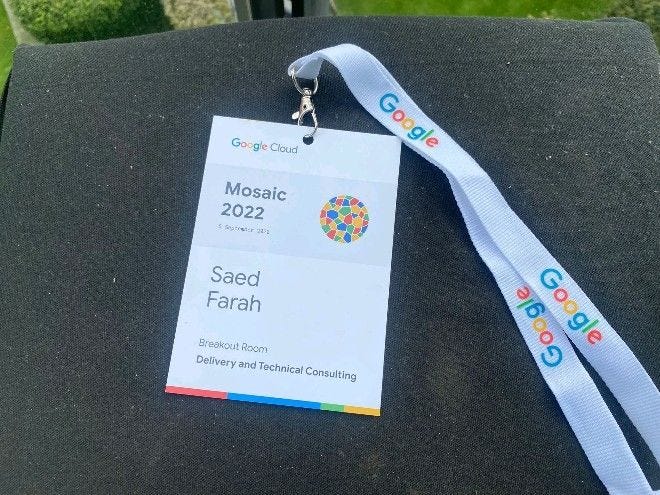From Repairs to the Cloud: My Unlikely Path to Google
A concise intro to how I got where I am today
I had a non-traditional entry into the industry.
When I landed my first tech role, I didn’t have a CS degree. However, with the rise of so many self-taught engineers, it does make you wonder if self-studying your way in IS the traditional route.
My interest in tech sparked when I landed a role at EE — a UK telecom—as a Sales Rep. I left that position and started my own venture during my second year at university — paradoxically studying business management — buying and selling phones and accessories. I sourced goods at a discounted rate from my former colleagues and sold them at market price.
What started as simply sourcing phones soon led to customers requesting phone repairs—LCD screens, charging ports, camera replacements. I have to admit I had no experience with any of these repairs. That’s when I reached out to a technician at a local computer shop. I shadowed him and, more importantly, delegated tasks I wasn’t strongest at, allowing me to focus on what I was more skilled at: the business and customer aspects. I learned that if you don’t understand something, seek help—ideally from those who are more experienced. The worst-case scenario is that you learn something valuable.
If you’ve ever spent time as an entrepreneur, you know you try to learn as many skills as possible to get the job done. This practice would later be paramount to how I navigated my career.
I really enjoyed my time in the trade, but I soon realised it wasn’t scalable. The supply began to run dry, and ironically, I became increasingly curious about a career in tech. So, I enrolled in a COMPTIA A+ and N+ course to learn about the building blocks of IT. I spent 12 weeks focused on the hardware components of a computer and how computers communicate across networks.
I continued to learn after the course, revamped my CV, and got the ball rolling with interviews. Eight months later, I landed a support role at the NHS (National Health Service), but I certainly knew this wasn’t the endgame.
I was happy, earning money, and learning on the job. I genuinely felt like I was doing a service for the people—until I heard about the cloud.
So, I did what most of us would do: I binged on YouTube videos, trying to understand how cloud computing worked. Just like when I reached out to the local technician for help with repairs, I did the same on LinkedIn, connecting with professionals with the job title “Cloud Architect” or “Cloud Mentor.”
I didn’t realise it at the time, but looking back, finding someone who’s walked the path before you is always helpful for guidance.
With the advice I gathered, I set up an actionable plan and aimed to have something to show for my hard work. A year later, I had two industry-recognised certificates: Azure AZ-900 and AWS Cloud Practitioner, along with a year of experience as a support engineer at the NHS.
It was time to move on. The titles that followed included Cloud DevOps Engineer, DevOps Engineer, and Senior DevOps Engineer. The latest and most verbose one? Senior Cloud Security Platform Engineer, Sovereign Operations at Google.
Before landing the job at Google, I decided to take it to the next level. I began to give back by running sessions in a number of different communities, advocating for Kubernetes—a container orchestration tool that was ironically created by Google. I also created free content online on Kubernetes Best Security Practices and mentored those who were in the same position I once was: a mobile phone businessman curious about IT, or an IT support analyst eager to learn about DevOps, or even a DevOps Engineer aspiring to become a Senior.
Being that supportive figure taught me a valuable lesson, balance between taking and giving back. It also allowed me to redefine myself and adapt to what I wanted to become, ultimately leading me to where I am today.
I never would have dreamed of working at Google. But here we are, a new chapter. As I reflect on my career I am immensely grateful to Allah and will continue to share insights from my learnings and experiences. If that sounds good to you, consider subscribing below. I aim to make this newsletter both educational and enjoyable for you.
I intentionally kept this introductory article concise to avoid overwhelming you with information as we embark on this journey together.







